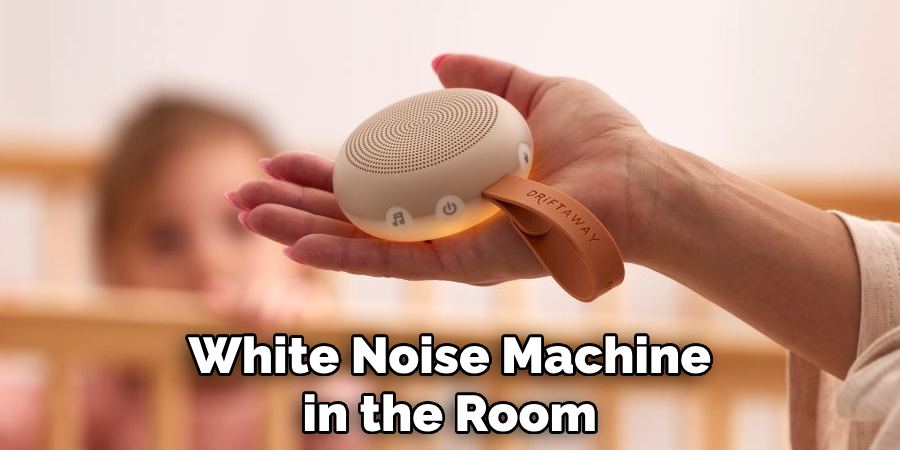Blocking noise from neighbors can significantly improve the quality of life in shared living spaces, whether in apartments, townhouses, or attached homes. Dealing with unwanted noise, such as loud conversations, music, or footsteps, can be frustrating and disruptive. Effective noise reduction strategies involve a combination of soundproofing techniques and practical solutions. This guide explores the key aspects of how to block noise from neighbors.

From simple fixes like adding rugs or curtains to more involved methods such as installing soundproof barriers or sealing gaps and cracks, there are various approaches to consider. Understanding the sources of noise and the layout of your living space is crucial in implementing targeted solutions. By addressing noise issues proactively and using the right techniques, individuals can create a quieter and more comfortable living environment, promoting better sleep, concentration, and overall well-being.
Identifying Sources of Noise
Before implementing noise-blocking strategies, it’s essential to identify the primary sources of noise in your living space. Noise can emanate from various areas, including walls, floors, ceilings, and windows. Common causes include loud conversations, television or music systems, footsteps, and household appliances.
In multi-story buildings, impact noise from upstairs neighbors or airborne noise traveling through shared walls can be particularly distracting. Pay attention to the times when noise is most prevalent and note the type of sound and its origin. Understanding the specific sources of noise can help in selecting the most effective soundproofing methods.
Factors Contributing to Noise Transmission
Several factors can contribute to noise transmission within shared living spaces, impacting the effectiveness of soundproofing efforts. One significant factor is the construction material and quality of the building. Older buildings may have thinner walls and less insulation, allowing sound to travel more easily between units. Conversely, newer constructions might incorporate modern soundproofing techniques and materials, though variations still exist in the level of noise control provided.

The layout and design of your living space also play a critical role. Open floor plans can facilitate the spread of noise across larger areas without barriers to dampen the sounds. Additionally, the presence of shared walls, floors, and ceilings in multi-unit buildings creates pathways for both airborne and impact noise to travel. Gaps, cracks, and poorly sealed openings around windows, doors, and utility pipes further exacerbate noise problems by allowing sound waves to penetrate more easily.
10 Methods How to Block Noise from Neighbors
1. Soundproof Your Walls
One of the most effective ways to block noise from neighbors is to soundproof your walls. This can be done by adding mass to your walls, which helps to absorb and block sound waves. Start by installing acoustic panels, which are designed specifically to reduce noise. These panels can be made of various materials, such as foam or fabric-covered boards, and can be easily attached to your walls.
Another option is to add a layer of drywall, preferably with sound-dampening green glue sandwiched between the layers. This creates a denser barrier, reducing the transmission of sound. If possible, consider insulating your walls with soundproofing materials like mineral wool or fiberglass insulation. These materials fill the gaps in your walls, further reducing noise transmission.

2. Install Soundproof Curtains
Soundproof curtains are an easy and effective way to reduce noise from outside or adjacent rooms. These heavy, dense curtains are made from thick materials that absorb sound waves. When installing soundproof curtains, ensure they cover the entire window and extend beyond the frame to maximize their effectiveness.
For the best results, choose curtains that reach from ceiling to floor and overlap at the center when closed. These curtains not only block noise but also provide added benefits such as thermal insulation and light blocking, enhancing the comfort of your living space.
3. Use Acoustic Rugs and Carpets
Floors can be a significant source of noise, especially in apartments or multi-story homes. Acoustic rugs and carpets help to absorb sound, reducing noise transmission between floors. Choose thick, high-pile rugs or carpets, and consider adding a sound-absorbing underlay for additional noise reduction.
Place these rugs in high-traffic areas, such as living rooms, bedrooms, and hallways. Acoustic rugs and carpets are particularly effective in reducing impact noise, such as footsteps or dropped objects. Additionally, they add a cozy and stylish touch to your home decor.
4. Seal Gaps and Cracks
Noise can easily seep through gaps and cracks in walls, windows, and doors. Inspect your home for any openings and seal them with appropriate materials. Use weatherstripping for doors and windows to create a tight seal, preventing noise from entering or escaping. For cracks in walls or around window frames, use acoustic caulk, which is specifically designed to block sound.
Pay special attention to electrical outlets, light switches, and any other openings in the walls, as these can also be pathways for noise. Sealing gaps and cracks not only reduces noise but also improves energy efficiency by preventing drafts.

5. Install Solid Core Doors
Hollow doors are common in many homes but are not effective at blocking noise. Replacing them with solid core doors can make a significant difference in reducing noise transmission. Solid core doors are denser and heavier, providing a better barrier against sound.
Ensure the door fits tightly within the frame, and use weatherstripping around the edges to create a seal when closed. For added soundproofing, consider installing a door sweep at the bottom to block any gaps between the door and the floor. This method is particularly effective for rooms where privacy and quiet are essential, such as bedrooms and home offices.
6. Use Acoustic Panels and Foam
Acoustic panels and foam are designed to absorb sound waves, reducing noise levels within a room. These panels can be installed on walls, ceilings, and even doors to improve sound insulation. Choose panels that are thick and made from high-density materials for the best results.
Acoustic foam, often shaped like pyramids or wedges, is particularly effective at absorbing high-frequency sounds. Install these materials strategically in rooms where noise is a significant issue, such as living rooms, home theaters, or recording studios. Acoustic panels and foam not only reduce noise but also improve the overall acoustics of a room, enhancing sound quality for activities like listening to music or watching movies.
7. Add Bookshelves and Furniture
Strategically placing bookshelves and furniture against shared walls can help block noise from neighbors. Bookshelves filled with books act as a dense barrier that absorbs and diffuses sound waves.
Place large, heavy pieces of furniture, such as sofas, armoires, or cabinets, against the walls to add mass and reduce noise transmission. Additionally, consider using upholstered furniture, which naturally absorbs sound. This method not only helps with soundproofing but also makes your living space more functional and aesthetically pleasing.
8. Create a Soundproof Barrier with Plants
Plants can be surprisingly effective at reducing noise levels. Large, leafy plants absorb sound waves and can help create a quieter environment. Place plants in areas where noise is most problematic, such as near windows, along shared walls, or in corners where sound tends to echo.
Consider using a combination of large floor plants and smaller potted plants to maximize their sound-absorbing properties. In addition to their acoustic benefits, plants improve indoor air quality and add a touch of nature to your home.
9. Use White Noise Machines
White noise machines generate soothing background sounds that can mask unwanted noise from neighbors. These machines produce a consistent sound, such as the hum of a fan, the sound of rain, or ocean waves, which can help drown out disruptive noises. Place a white noise machine in the rooms where noise is most bothersome, such as bedrooms or home offices.
Adjust the volume to a comfortable level that effectively masks external noise without being too loud. White noise machines are particularly useful at night, helping you sleep better by creating a consistent auditory environment.

10. Negotiate with Neighbors
Sometimes, the most straightforward solution is to have a polite conversation with your neighbors about the noise issue. Approach them calmly and explain how the noise is affecting your quality of life. They may not be aware that their activities are disturbing you.
Suggest practical solutions, such as adjusting the volume of their TV or music, moving noisy activities to different times of the day, or using rugs and furniture to dampen sound. Establishing a friendly relationship with your neighbors can lead to mutual understanding and cooperation, making your living environment more pleasant for everyone.
Conclusion
In conclusion, blocking noise from neighbors involves a combination of soundproofing techniques, strategic use of materials, and fostering good relationships. Start by understanding the source of the noise and addressing it with methods such as soundproofing walls, installing soundproof curtains, and using acoustic rugs and carpets.
Seal gaps and cracks, replace hollow doors with solid core doors, and install acoustic panels and foam for added noise reduction. Incorporate bookshelves, furniture, and plants to create additional sound barriers, and consider using white noise machines to mask unwanted sounds.
Finally, communicate with your neighbors to find amicable solutions to noise problems. By implementing these ten methods, you can create a quieter, more peaceful living environment that enhances your overall well-being.
About
Safety Fic is a distinguished figure in the world of Diy design, with a decade of expertise creating innovative and sustainable Diy solutions. His professional focus lies in merging traditional craftsmanship with modern manufacturing techniques, fostering designs that are both practical and environmentally conscious. As the author of diy, Safety Fic delves into the art and science of Safety Fic-making, inspiring artisans and industry professionals alike.
Education RMIT University
(Melbourne, Australia) Associate Degree in Design (Safety Fic) Focus on sustainable design, industry-driven projects, and practical craftsmanship. Gained hands-on experience with traditional and digital manufacturing tools, such as CAD and CNC software.
Nottingham Trent University
(United Kingdom) Bachelor’s in diyfastly.com and Product Design (Honors) Specialized in product design with a focus on blending creativity with production techniques. Participated in industry projects, working with companies like John Lewis and Vitsoe to gain real-world insights.
Publications and Impact
In diy, Safety Fic his insights on indoor design processes, materials, and strategies for efficient production. His writing bridges the gap between artisan knowledge and modern industry needs, making it a must-read for both budding designers and seasoned professionals.
